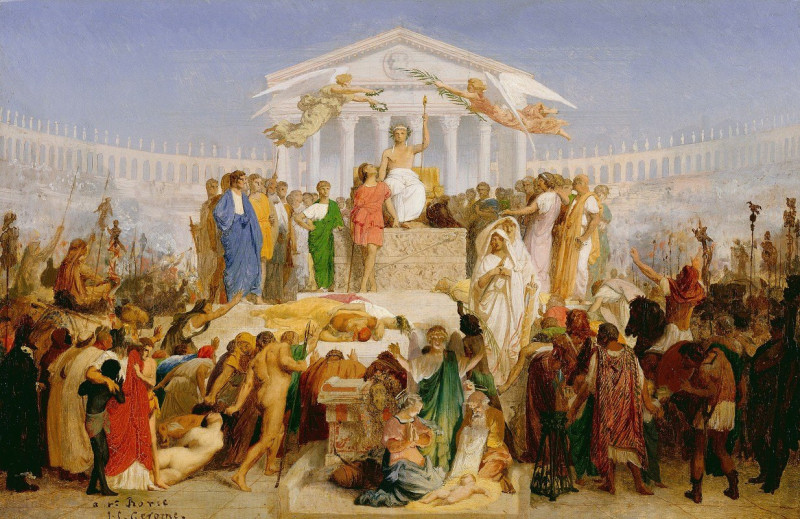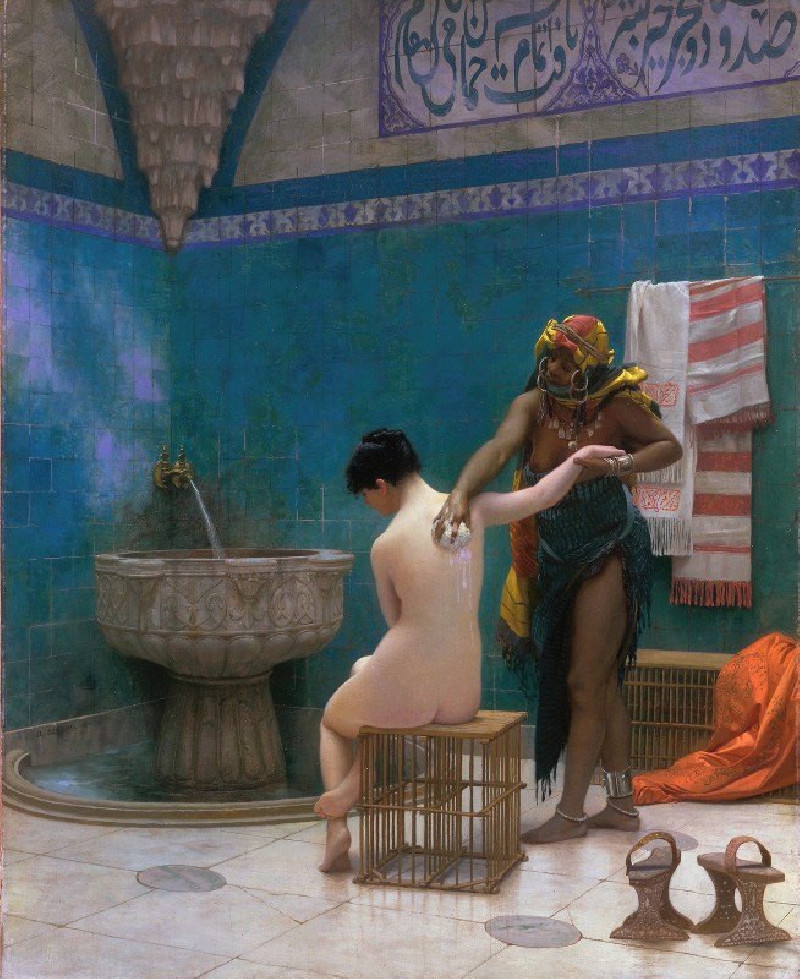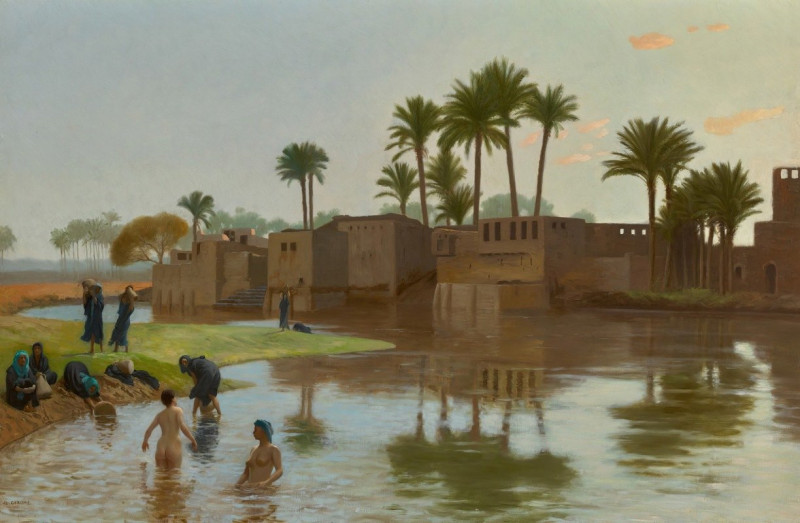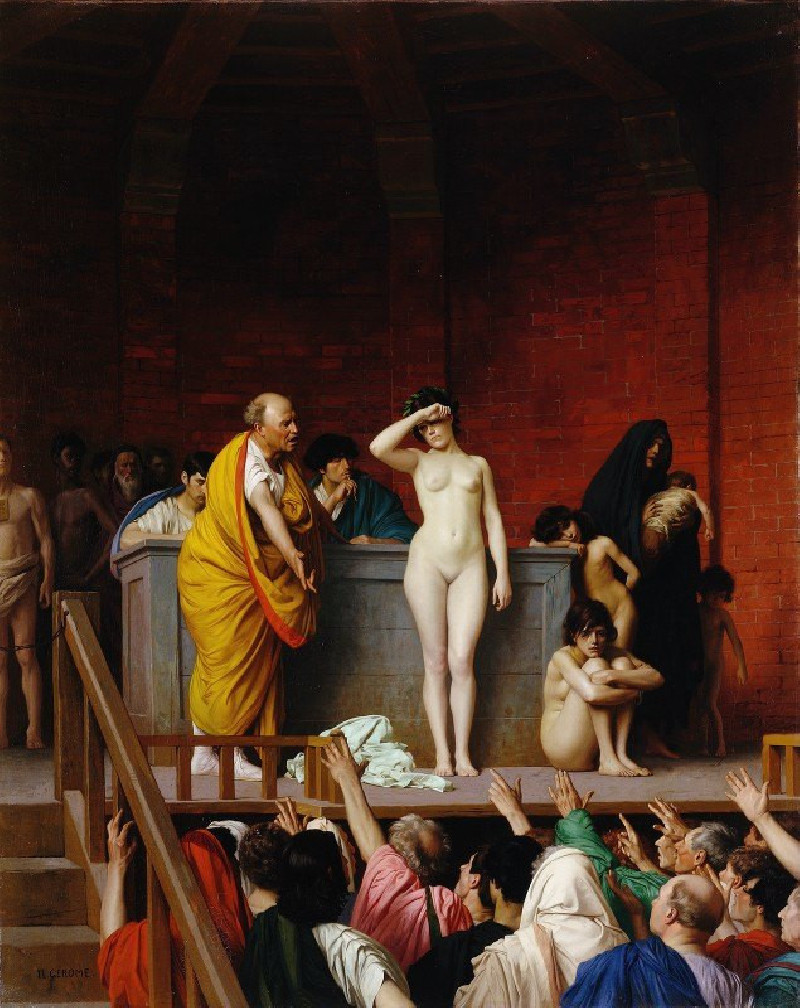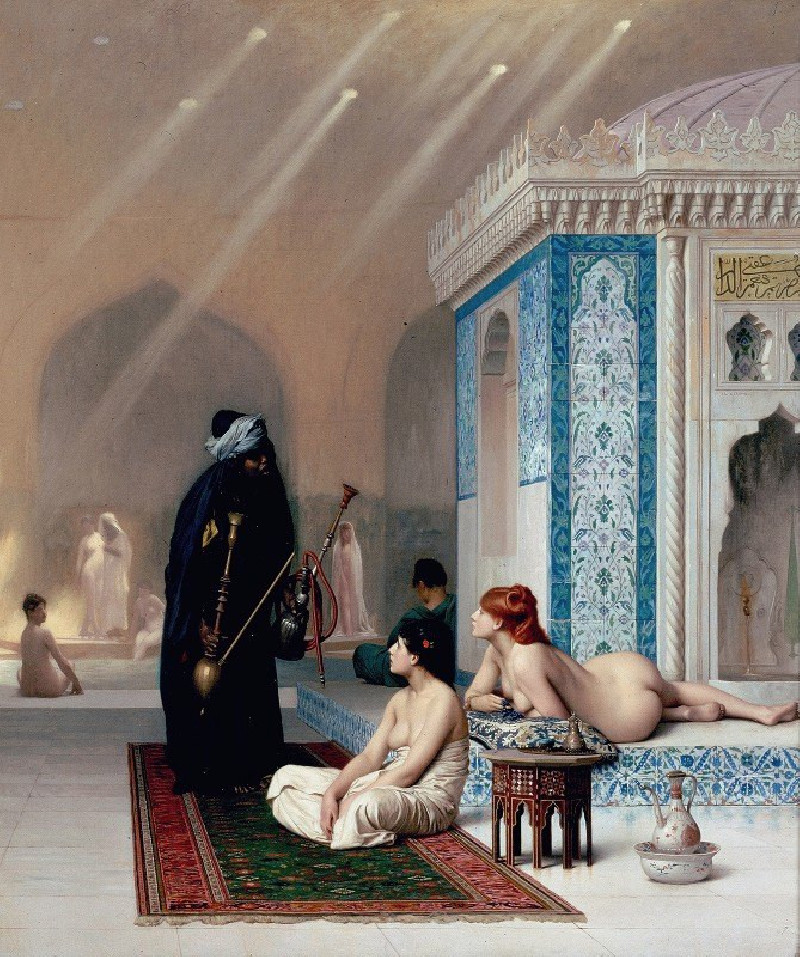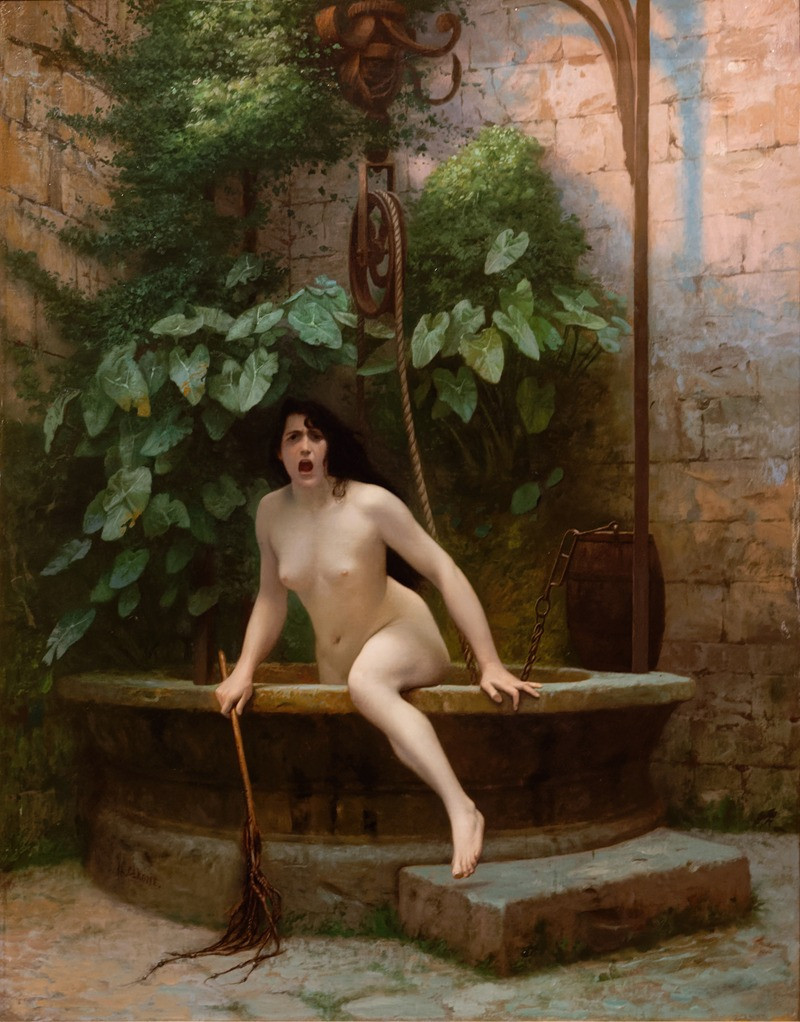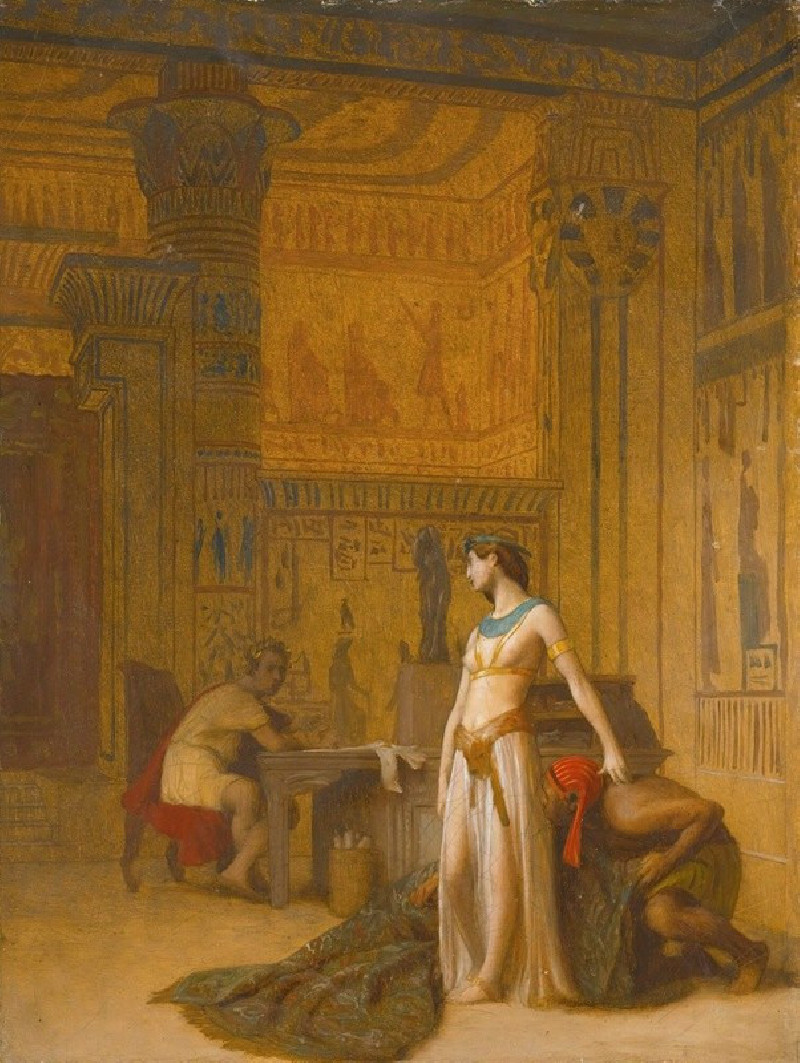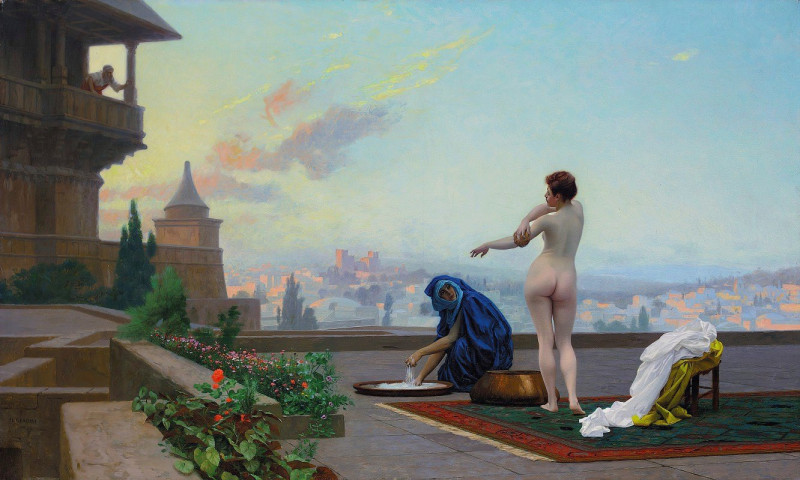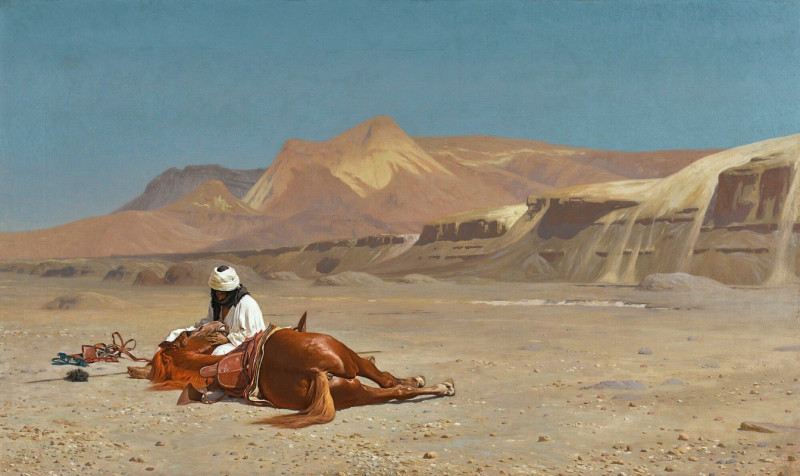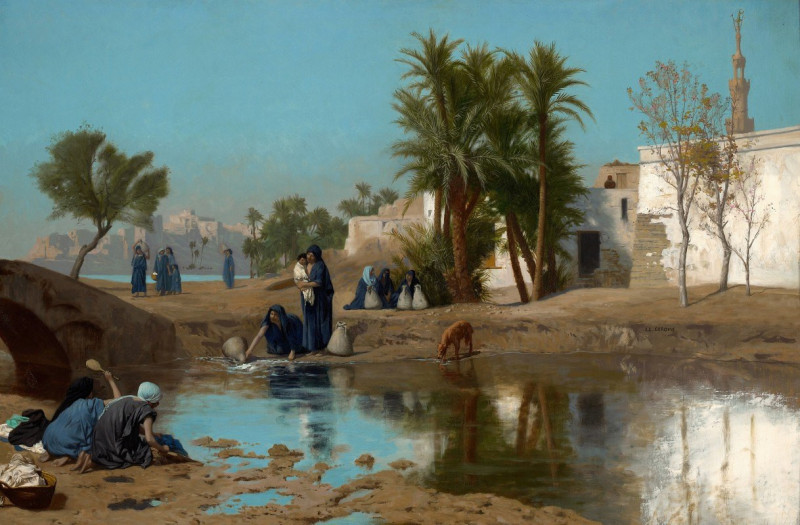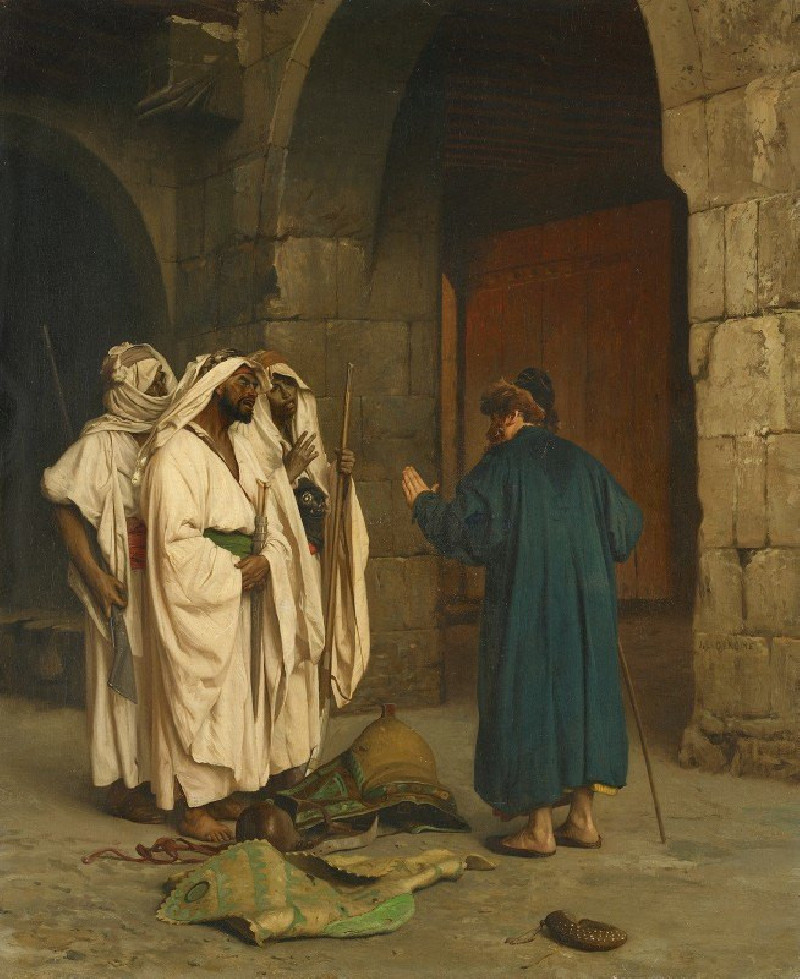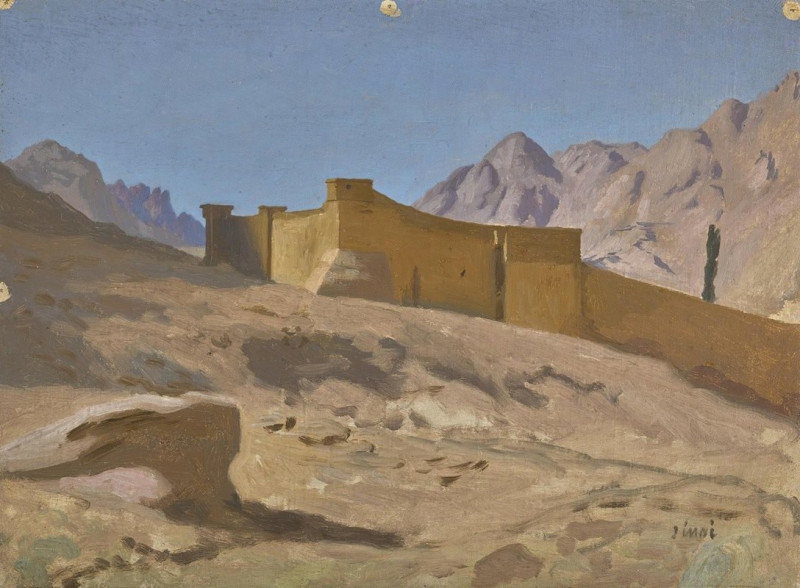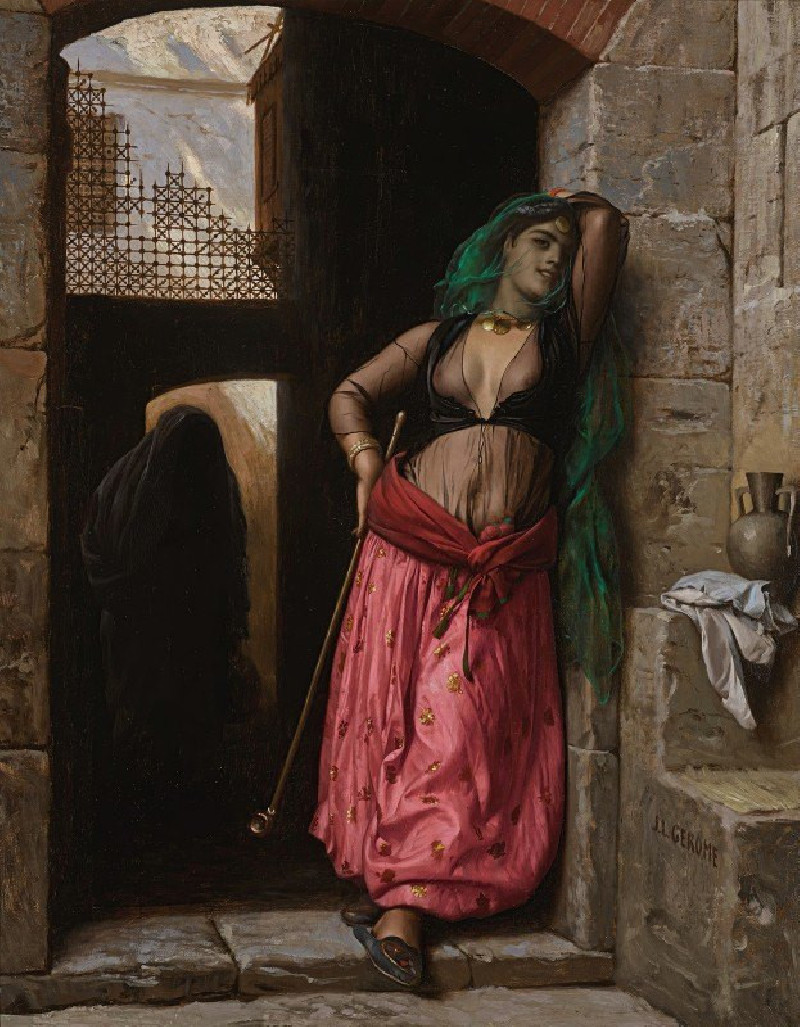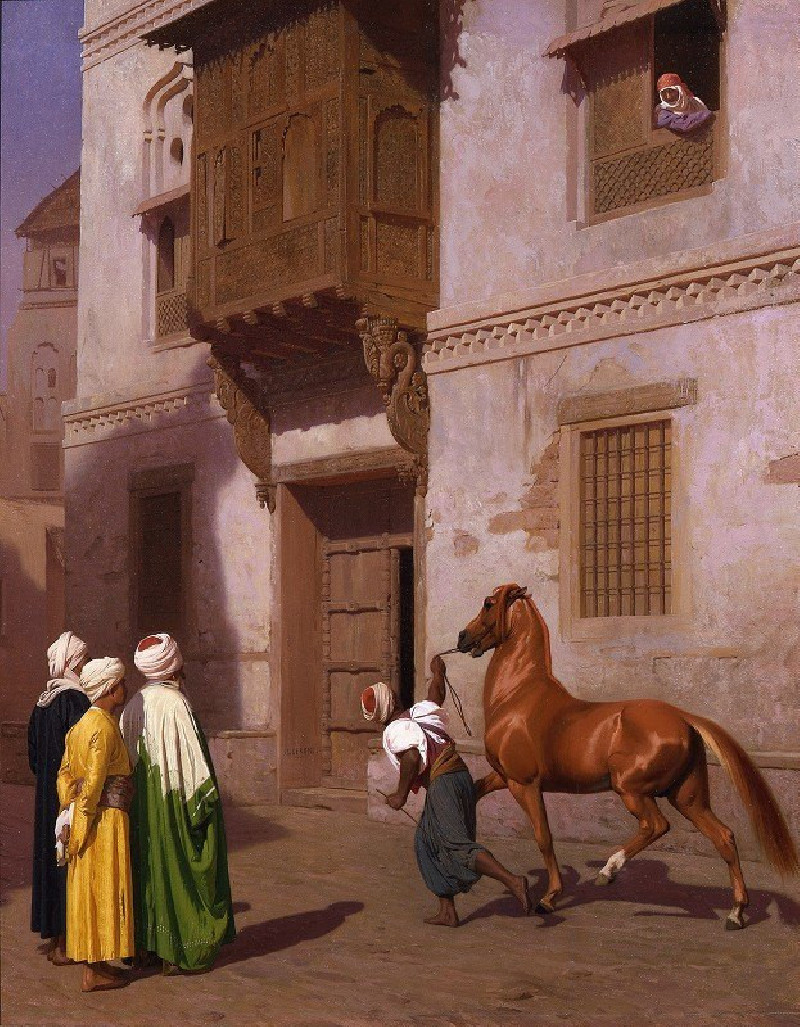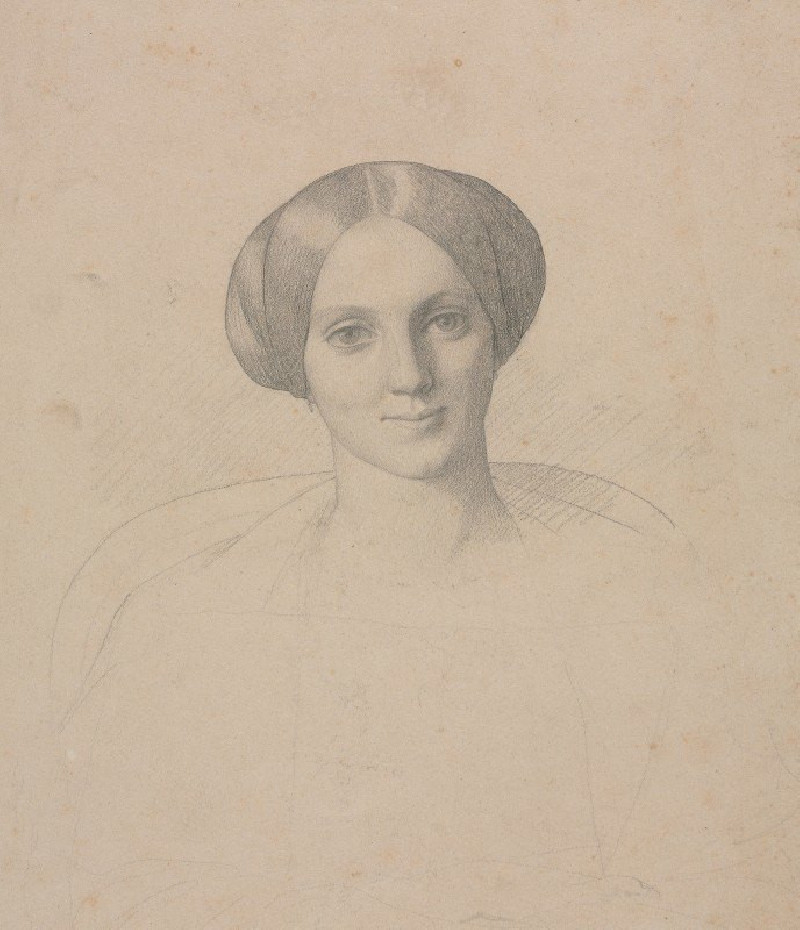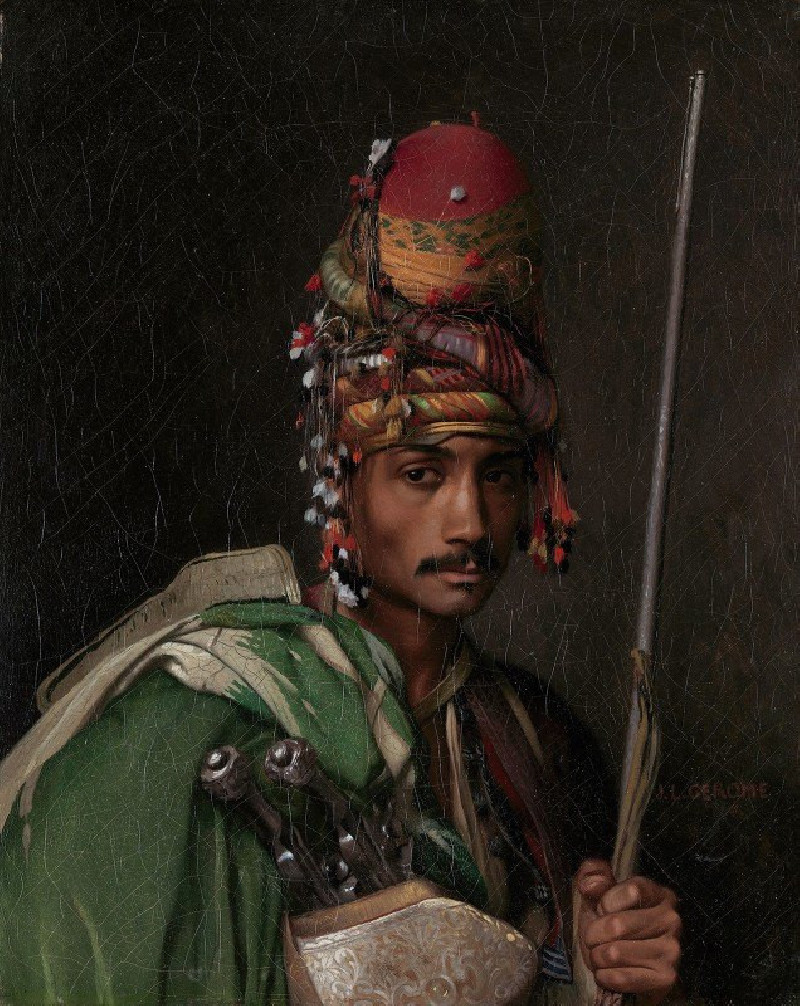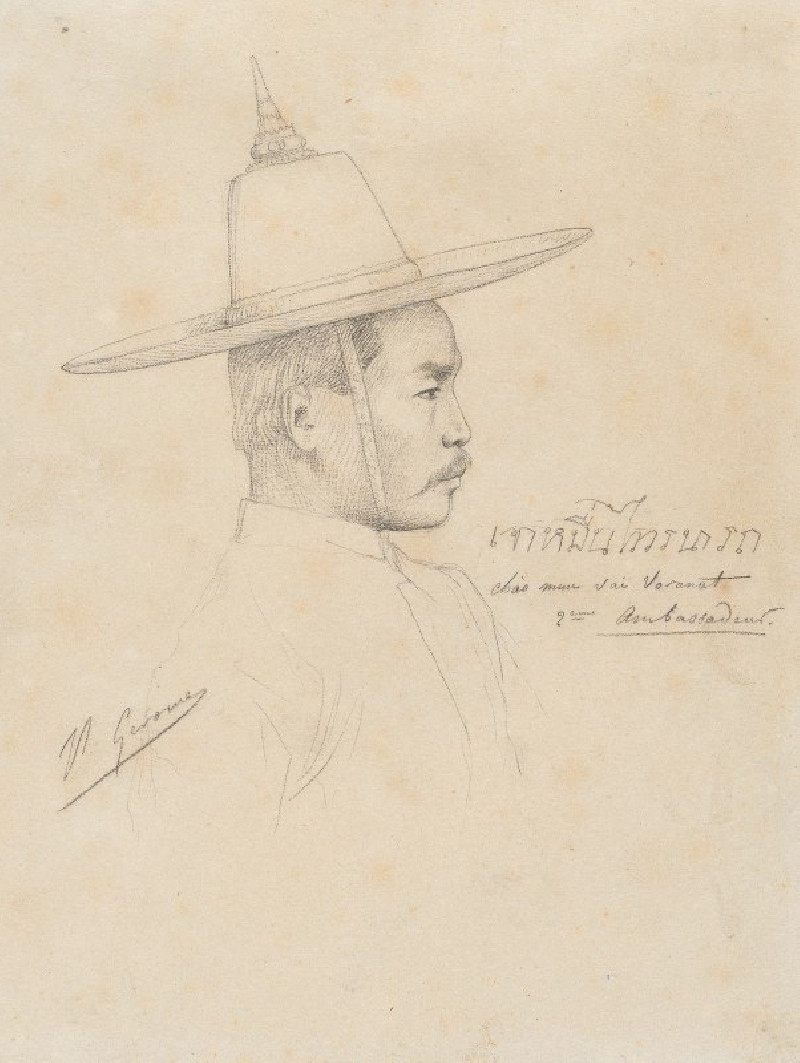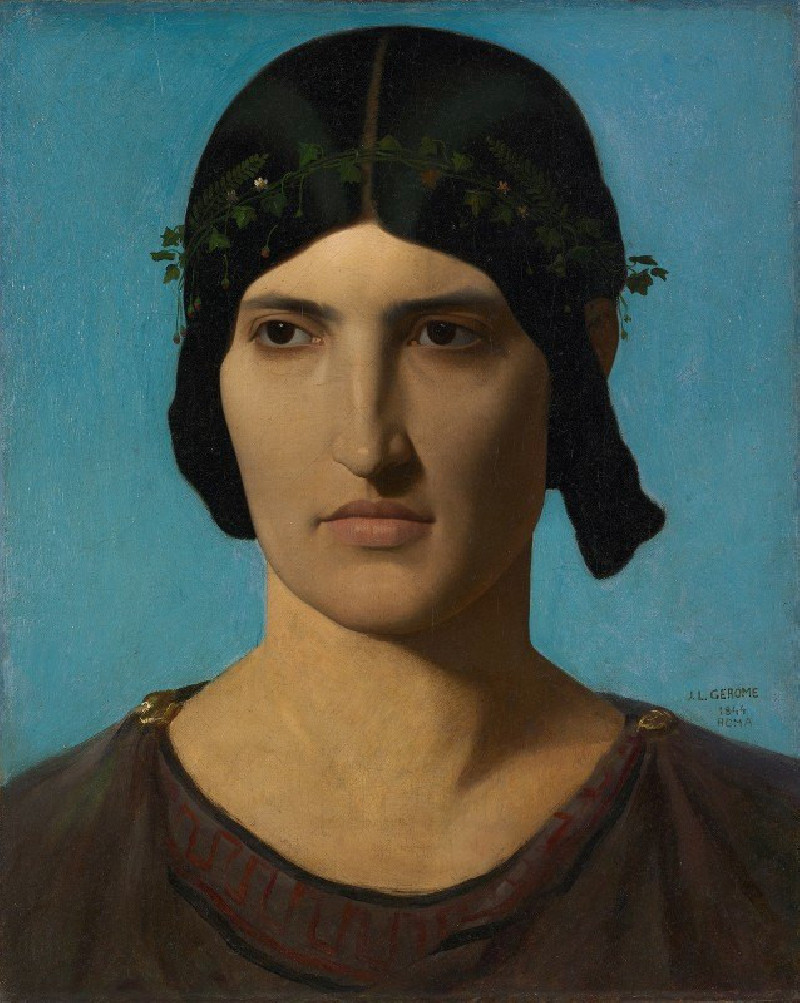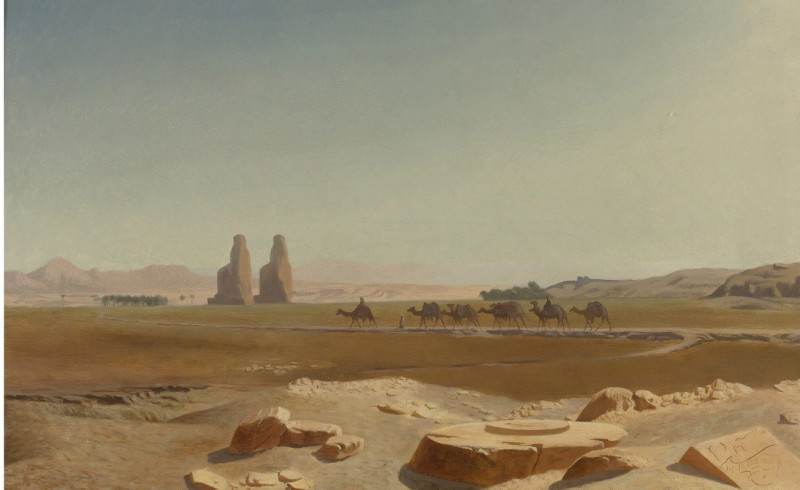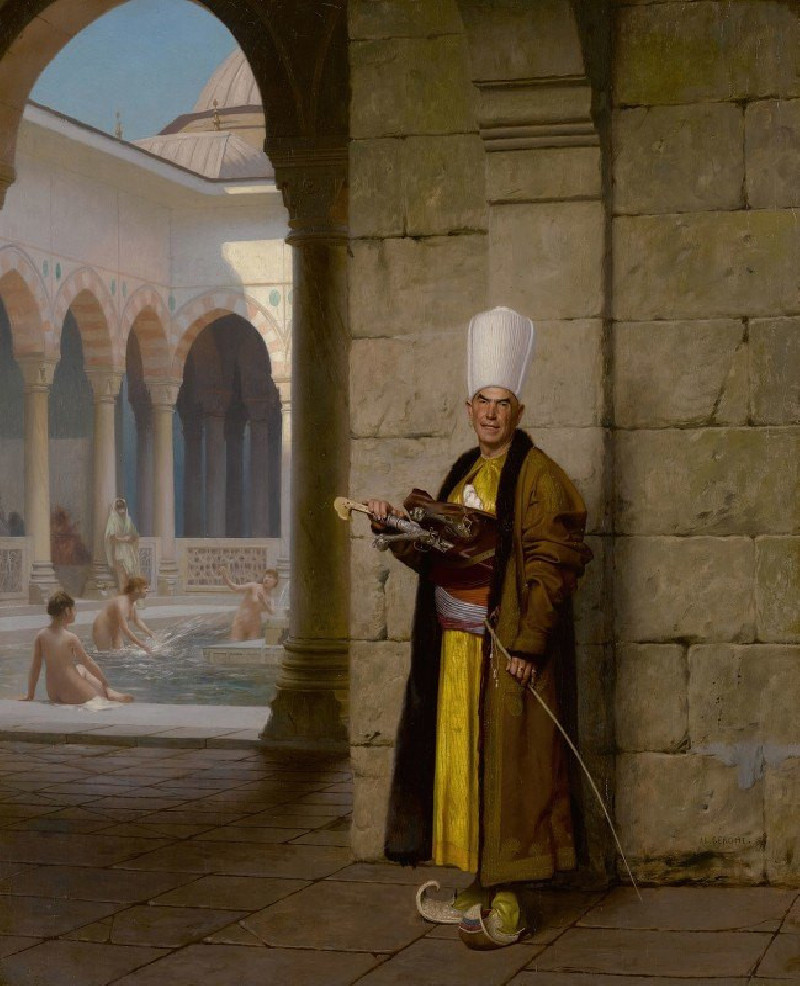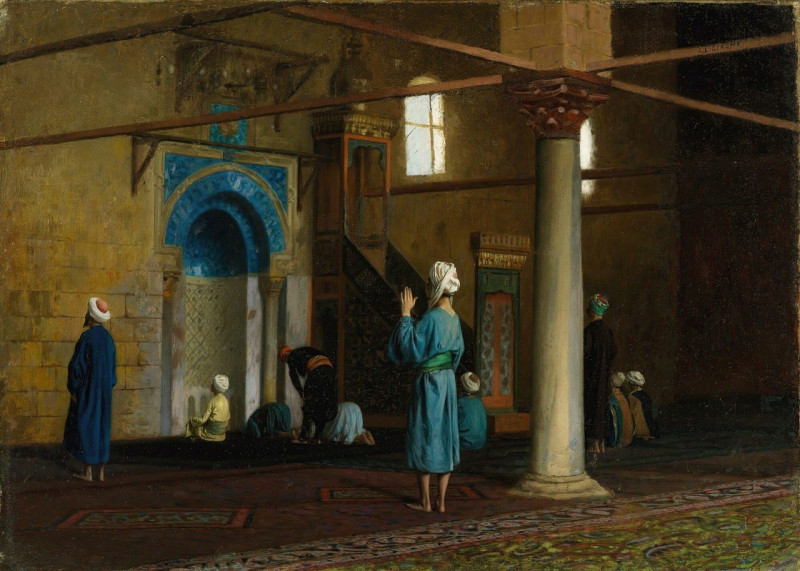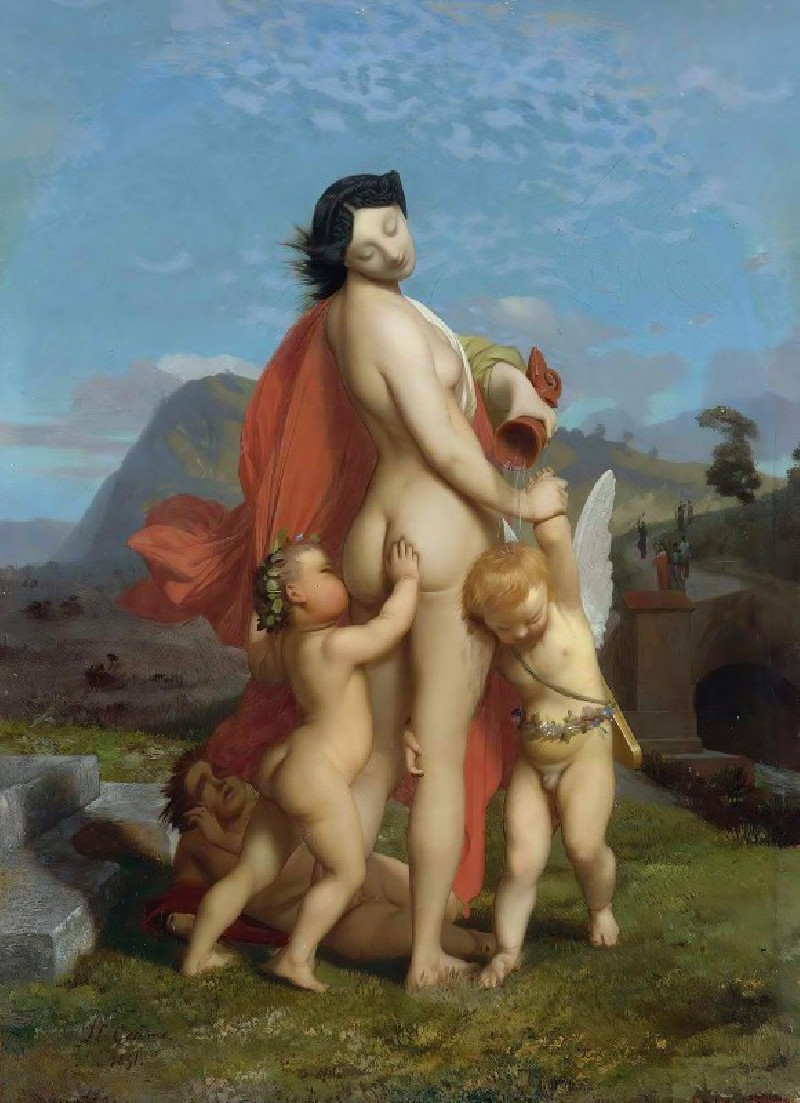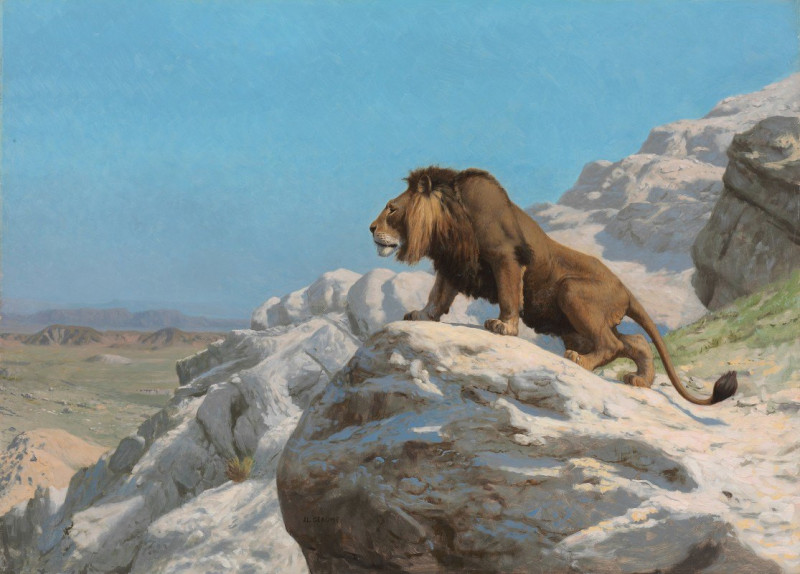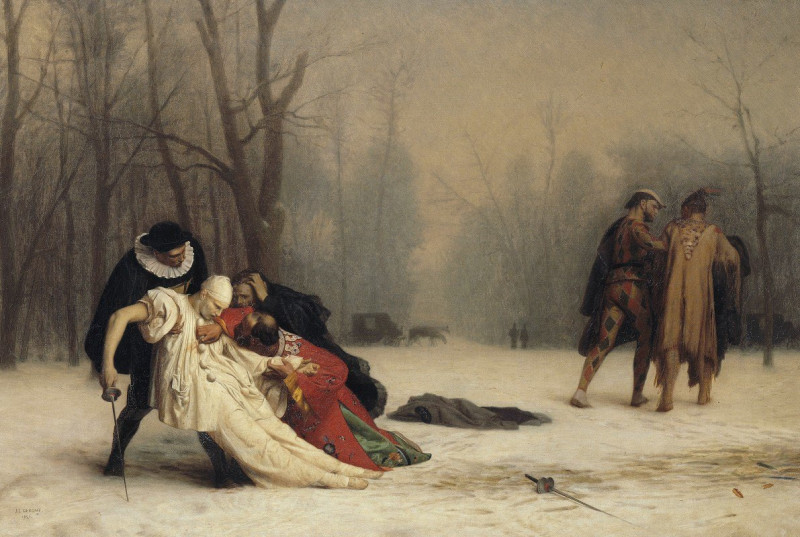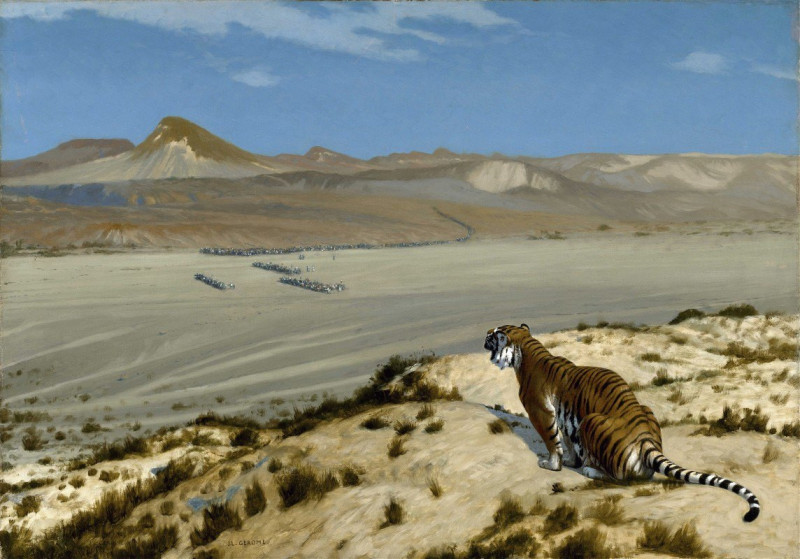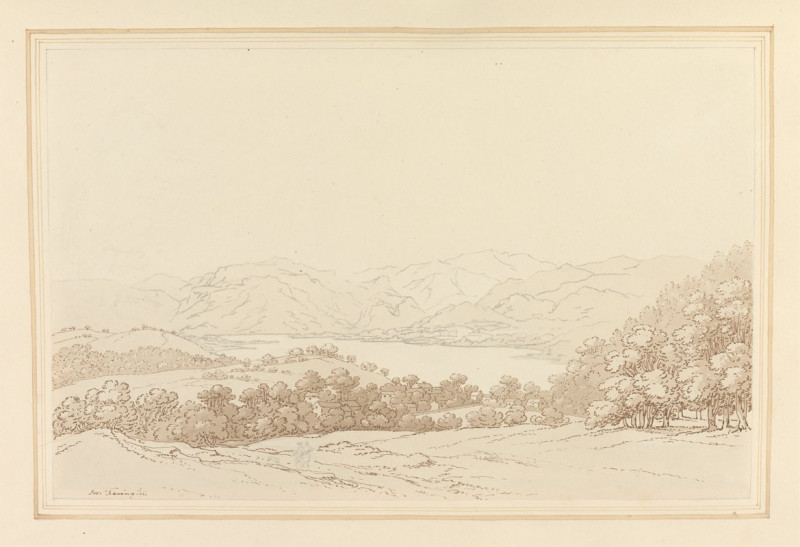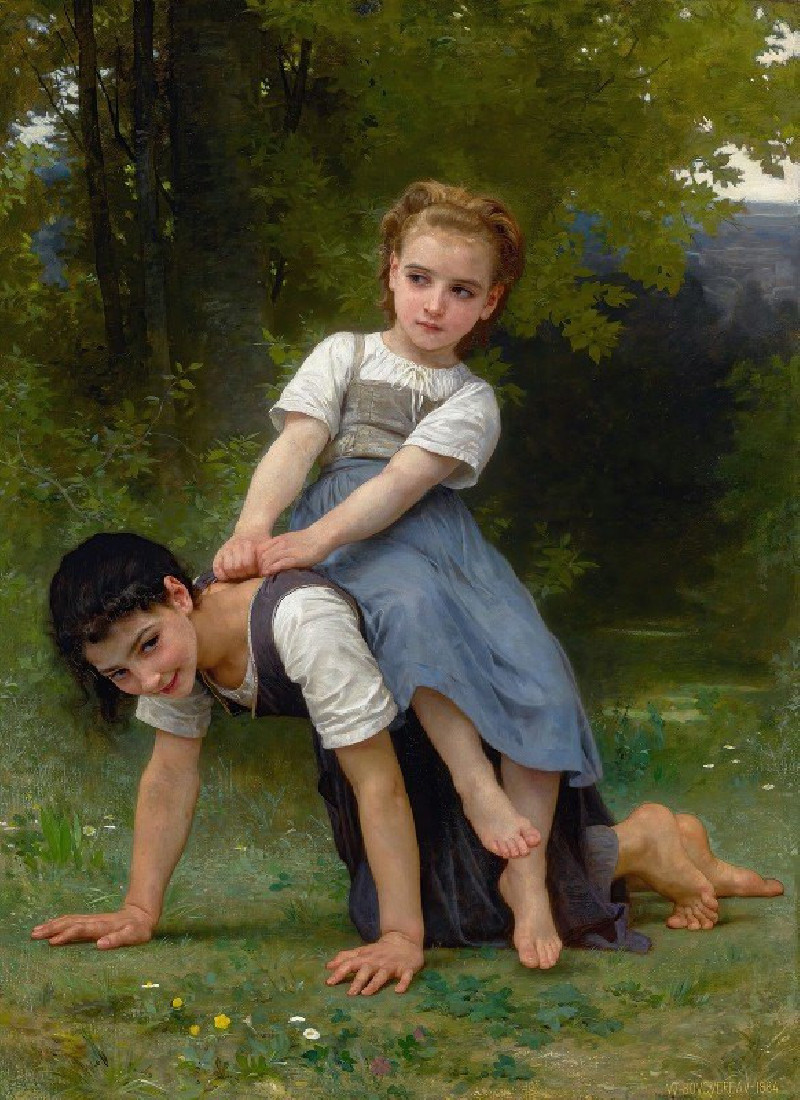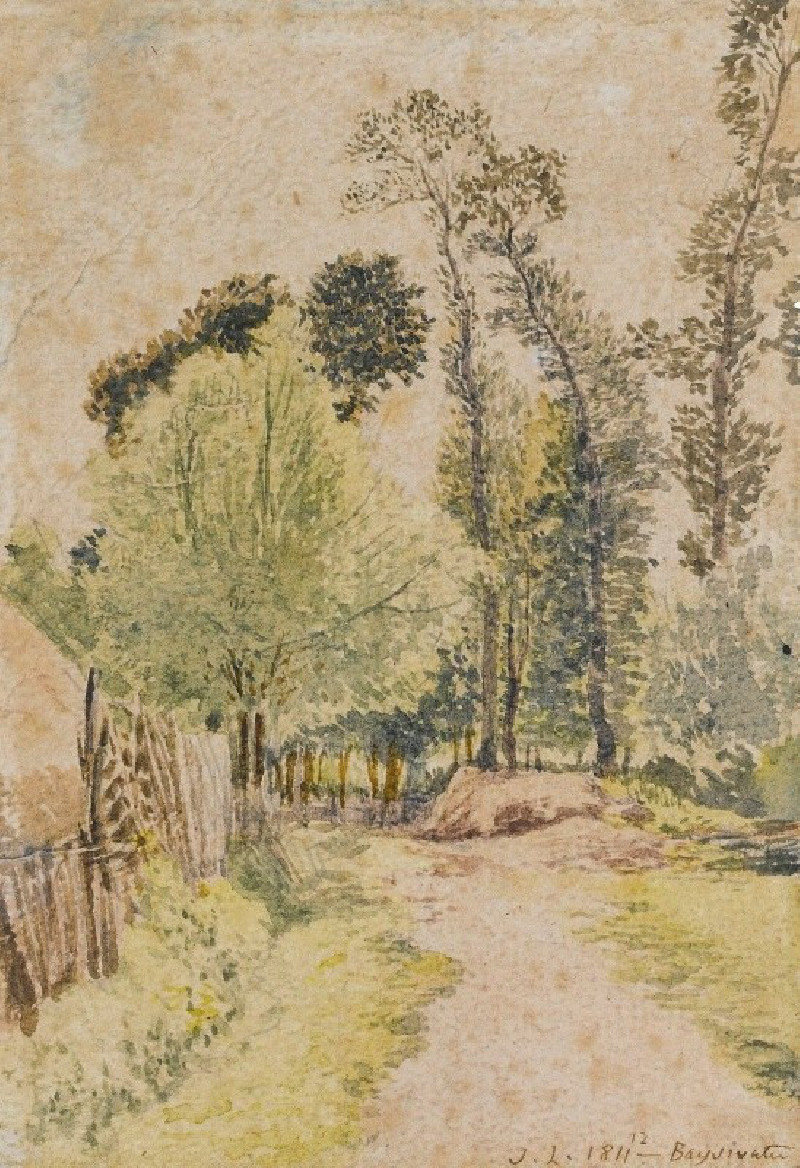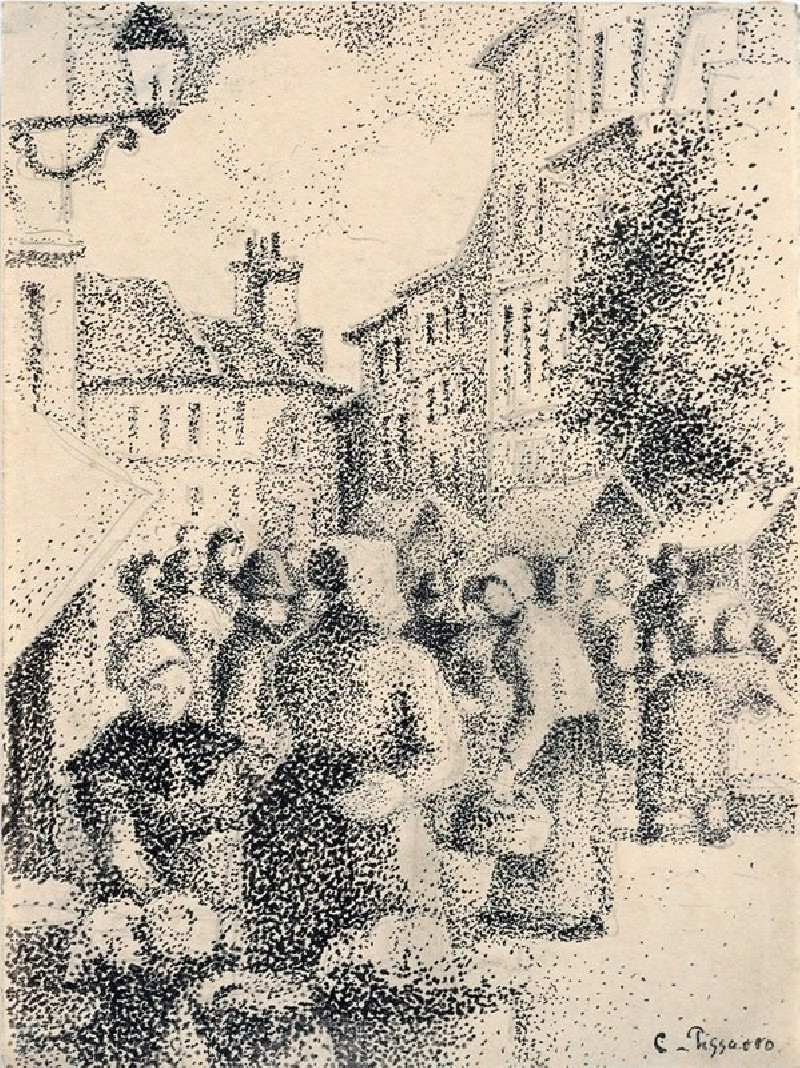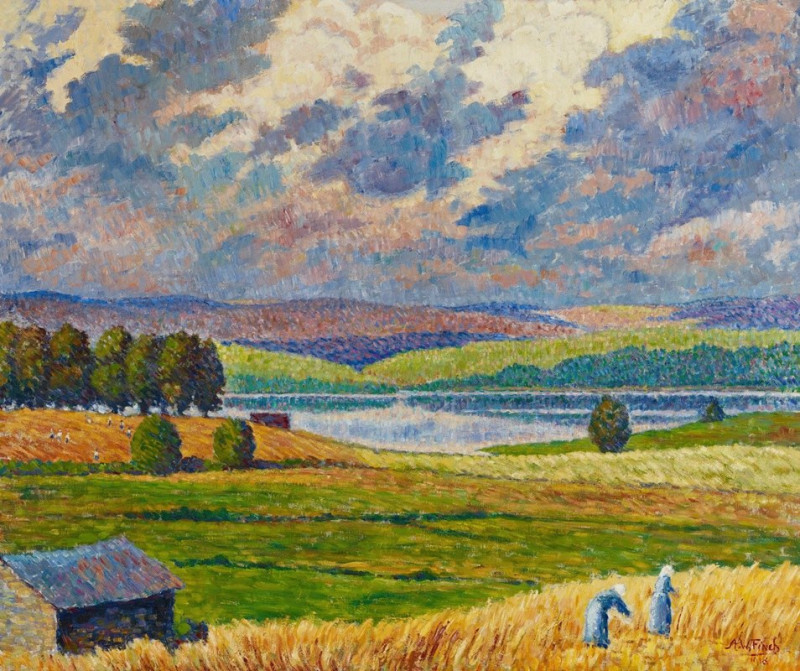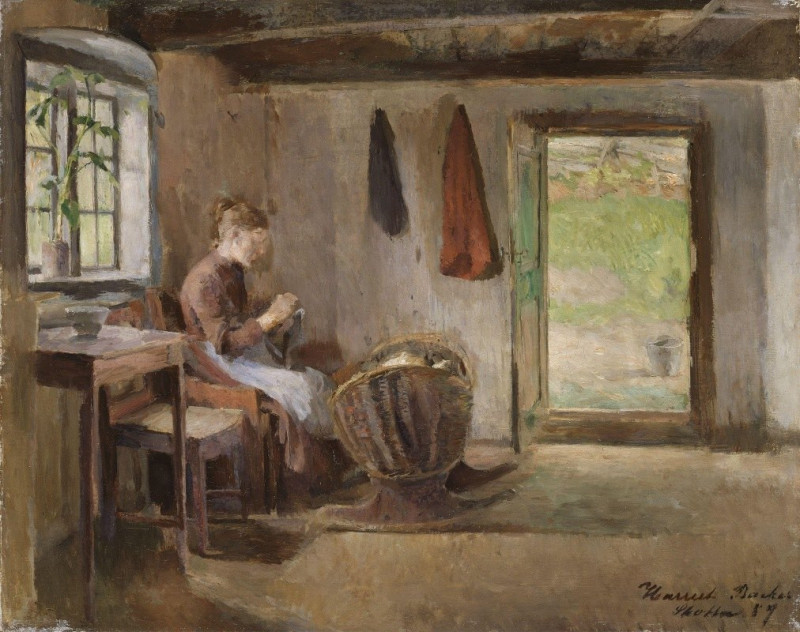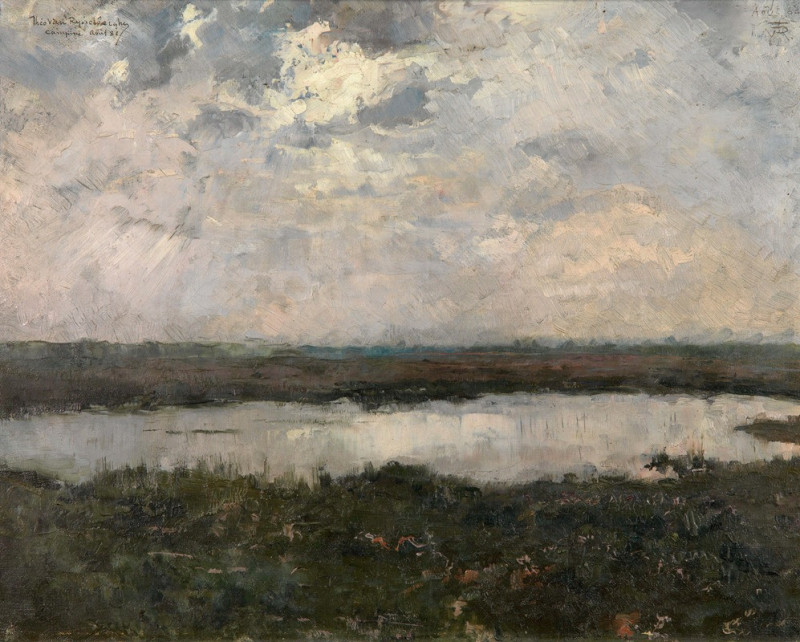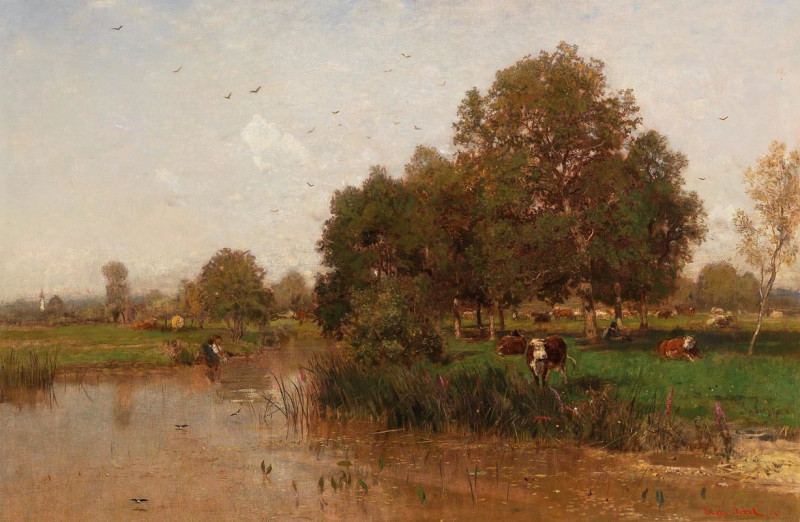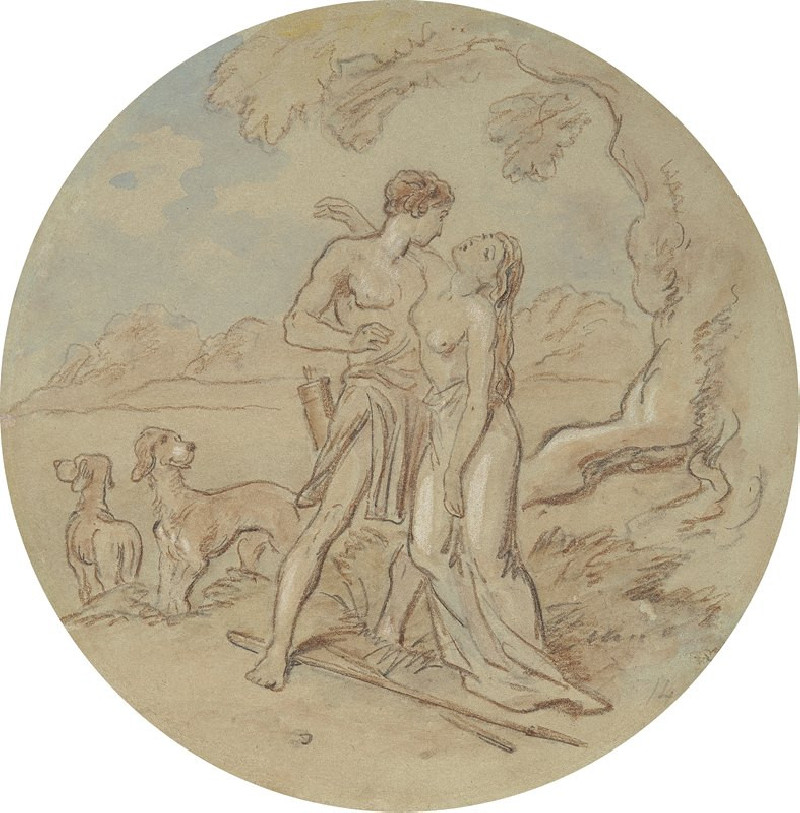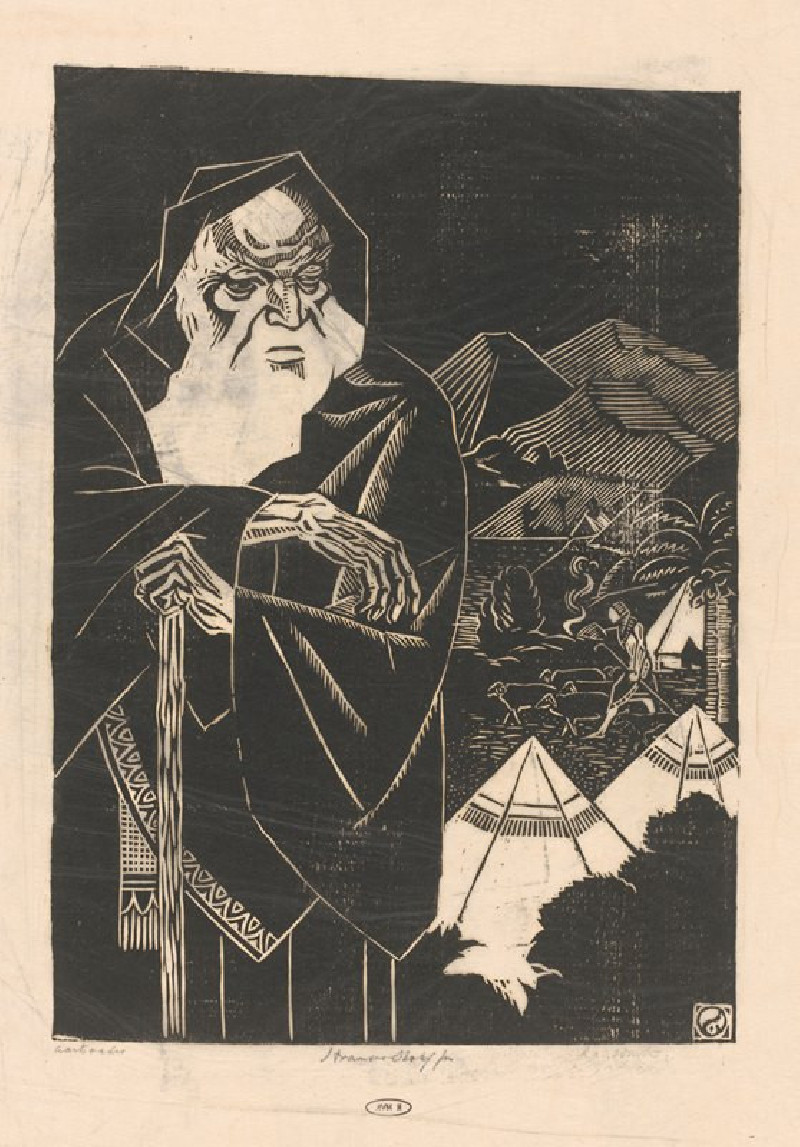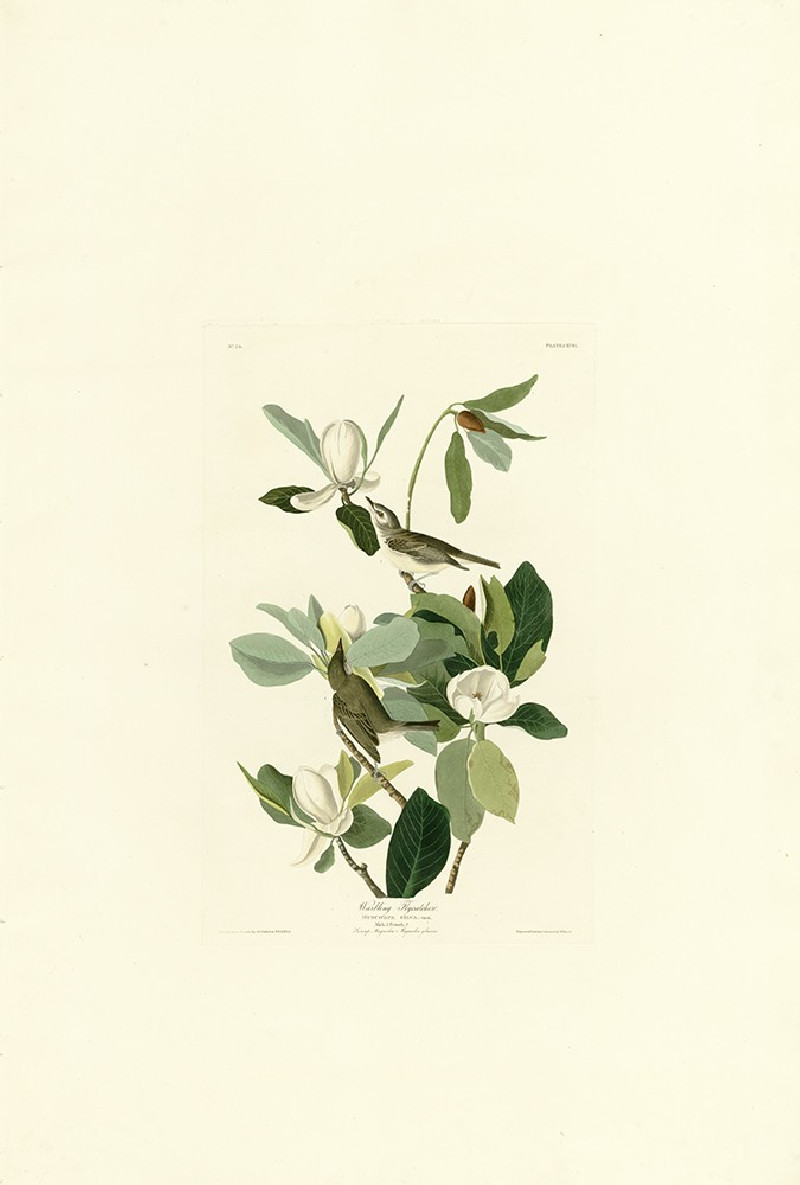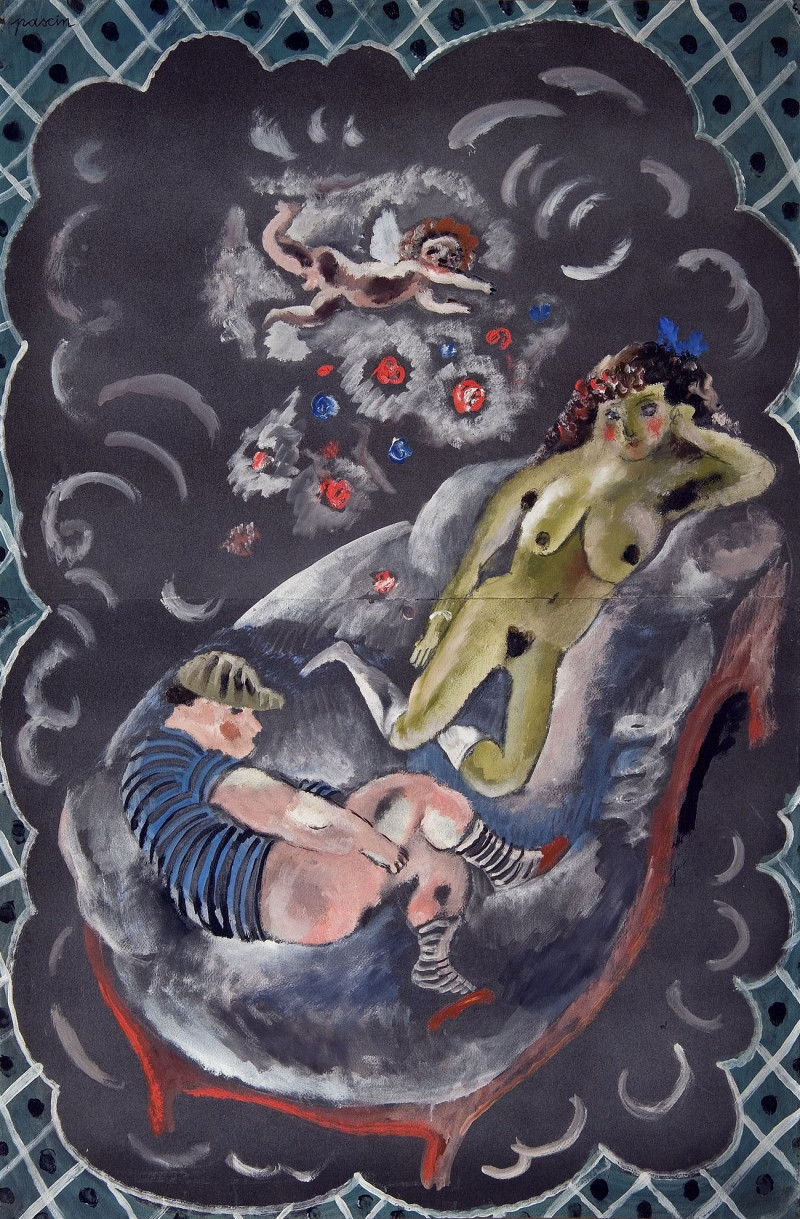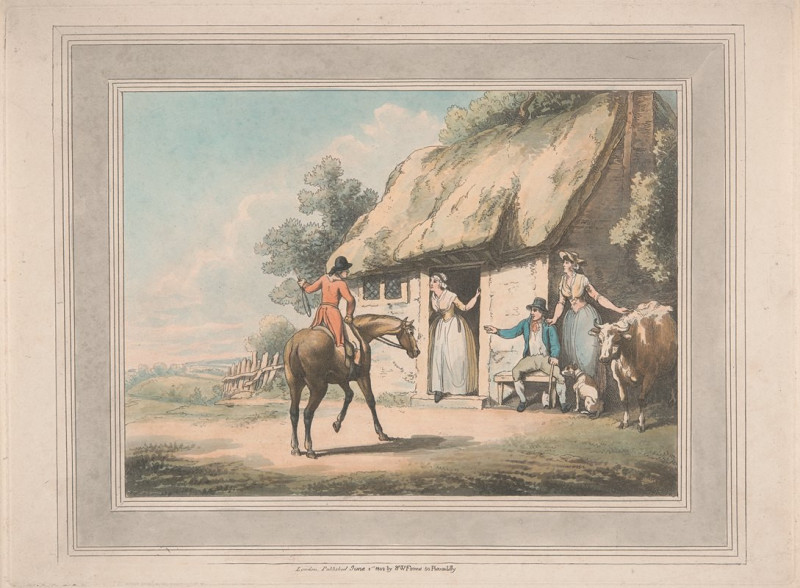The Age of Augustus, the Birth of Christ (1852)
Technique: Giclée quality print
Recommended by our customers
More about this artwork
"The Age of Augustus, the Birth of Christ" is a striking painting by the renowned 19th-century French artist Jean-Léon Gérôme. This work masterfully brings together an array of elements that evoke the grandeur and spirit of ancient Rome at a pivotal moment in history.At the center of the composition stands a majestic figure of Augustus Caesar, robed in white and seated upon a throne. He raises a symbolic olive branch with his right hand, signaling peace, while an attendant holds a cornucopia, symbolizing abundance and prosperity. This central scene, set against the backdrop of a grand, pillared Roman temple, evokes the Pax Romana—the period of peace and stability Augustus ushered across the empire.Around Augustus, a diverse array of figures from Roman society is depicted in various acts of homage and activity, adding vibrancy and depth to the painting. The foreground teems with figures: senators in togas, soldiers in armor, and citizens offering sacrifices and gifts, suggesting a grand celebration. Notably, some individuals in quieter, reflective poses may symbolize philosophers or early Christians, hinting at the concurrent advent of Christ.Dramatically, Gérôme contrasts the pomp and circumstance of imperial power with the subtle, divine intervention of the newborn Christ. This juxtaposition invites the viewer to reflect on the intersection of historical and religious narratives, encapsulating a moment when earthly and divine narratives converge.Overall, Gérôme's painting is not just an artistic representation but a narrative tapestry, woven with symbols of power, faith, and the transcendence of historical moments.
Delivery
Returns
Jean-Léon Gérôme was a French painter and sculptor in the style now known as academicism. His paintings were so widely reproduced that he was "arguably the world's most famous living artist by 1880." The range of his oeuvre included historical painting, Greek mythology, Orientalism, portraits, and other subjects, bringing the academic painting tradition to an artistic climax. He is considered one of the most important painters from this academic period. He was also a teacher with a long list of students.

